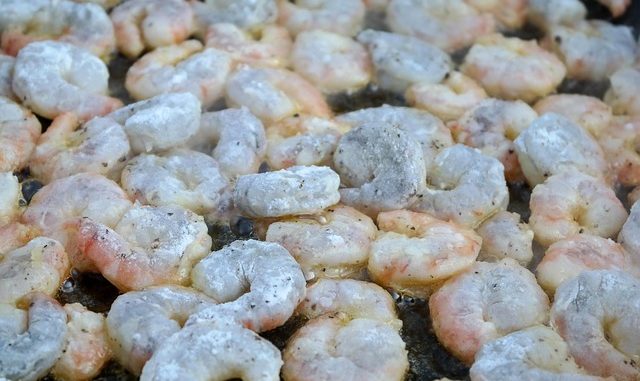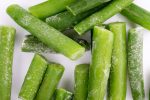
Shrimps and prawns are essential ingredients of the gourmet kitchen but for many of us, fresh seafood is often hard to come by. So what to do? Frozen seafood is probably the simplest, easiest way to purchase foods like shrimp and prawns because it is more accessible and can be stored more readily.
The texture and taste of shrimp is defined by the protein and the water content. These are after all the main constituents of shrimp so it’s not surprising these two components have the most bearing on flavour. The interactions between them are key to the sensory aspects and the two factors most commonly studied in research (Tamura & Akasaka, 1992; Gao et al., 2010). If you see any changes in the quality of the prawn it will be because of changes in the muscle structure and this comes as a result of proteins breaking down and the way any water has formed within the tissues (Cui et al., 2012).
Water exists in three states or forms. We have free water, intermediate water and bound water. Water can be bound when it is physically trapped in crystals as in crystalline starch. It can also be bound when forming stable water colloids because the major polarity of the carboxyl and amino groups in the protein network binds strongly to hydrogen (Hatekeyama et al., 2016). Intermediate water occurs in muscle fibres and the myolemma. The transition temperature is slightly lower than pure water.
Free water is the key form for water in processing. Such water in foods freezes at around 0 °C (Shin et al., 2002). Free water also evaporates from food which reduces the moisture content when humidity is low. When the humidity is high enough food absorbs moisture which is also free water. Free water is also an issue for microbial growth helping microorganisms grow and ferment in foods. Other foods such as dairy and fresh baked goods contain high levels of water – this is 35% higher in these foods than a frozen meat product. When it comes to frozen meats of all sorts, bound water and intermediate water transform into free water which then impacts texture and quality.
The freezing process will often mean shrimp is obtained in either IQF or as block frozen. What really causes concern is the thawing process because it is when the frozen shrimp or prawn has any ice structure removed that the quality issues begin. Thawing often leads to protein denaturation and textural defects in the shrimp muscle set in (Boonsumrej et al., 2007; Sriket et al., 2007).
References
, , & (2007). Effect of freezing and thawing on the quality changes of tiger shrimp (penaeus monodon) frozen by air‐blast and cryogenic freezing. Journal of Food Engineering, 80(1), pp. 292–299. https://doi.org/10.1016/j.jfoodeng.2006.04.059
, , , , & (2012). Study on moisture status change of ready‐to‐eat shrimp during storage. Journal of Chinese Institute of Food Science and Technology, 12(6), pp. 198–203.
, , & (2010). Water dynamics clue to key residues in protein folding. Biochem Biophys Res Commun, 392(1), pp. 95–99. https://doi.org/10.1016/j.bbrc.2010.01.003
, , & (2016). Role of bound water on structural change of water insoluble polysaccharides. Food Hydrocolloids, 53, pp. 62–68. Retrieved from https://www.sciencedirect.com/science/article/pii/S0268005X14004755
, , & (1989). The effects of proteins on the proton NMR transverse relaxation times of water. Molecular Physics, 67(4), pp. 903–918. https://doi.org/10.1080/002689789001015
, , & (1990). A new interpretation of proton NMR relaxation time measurements of water in food. Food Chemistry, 37(2), pp. 95–111. https://doi.org/10.1016/0308-8146(90)90084-h
, & (2005). Mechanisms of water‐holding capacity of meat: The role of postmortem biochemical and structural changes. Meat Science, 71(1), pp.194–204. https://doi.org/10.1016/j.meatsci.2005.04.022
, , , & (2002). Synthesis and characteristics of the interpenetrating polymer network hydrogel composed of chitosan and polyallylamine. Journal of Applied Polymer Science, 86(2), pp. 498–503. https://doi.org/10.1002/app.11008
, , , & (2007). Comparative studies on the effect of the freeze‐thawing process on the physicochemical properties and microstructures of black tiger shrimp (penaeus monodon) and white shrimp (Penaeus vannamei) muscle. Food Chemistry, 104(1), pp. 113–121. https://doi.org/10.1016/j.foodchem.2006.11.004
, & (1992). Quantitative evaluation of water content in a solid protein by deuterium NMR. Biochimica et Biophysica Acta, 1119(2), pp. 178–184.


Leave a Reply